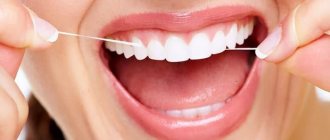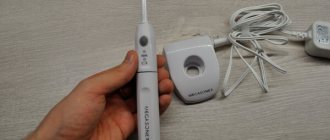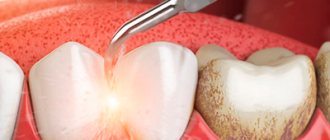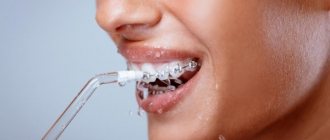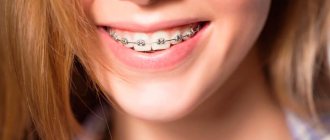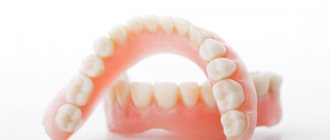Without making a knot, we pinch the end of the thread in another cut on the cardboard. Then we start waxing the thread. To do this, you need to soften the wax a little in the palm of your hand or move it several times with quick movements over the flame of a lighter. Generously rub the winding on the cardboard on both sides with soft wax.
Next, heat the iron. On the surface for ironing, spread a newspaper in several layers, then an A4 sheet or tracing paper, on which we place a cardboard with threads, again an A4 sheet on top or cover it with tracing paper, you can cover it with another newspaper on top so as not to stain the iron with wax, but because... I have a working iron, I’m not afraid of getting it dirty. Let's start ironing. Do not leave the iron in one place for a long time; check the threads to see if the wax is melting. If there is an unpleasant smell of burnt plastic, it means the stove is too hot, and the threads can melt. The wax should all melt, the threads should be saturated with wax and be smooth to the touch, not greasy from the wax, as with regular waxing! Don't forget to turn the cardboard over and iron the threads on the other side, as well as on the bend along the edges of the cardboard!
Let the threads cool, then begin to unwind the threads from the cardboard, starting from the end without a knot. We wind the thread back onto the original spool.
DIY waxing thread
from katechka
Waxing thread is a process that helps to obtain a smooth, strong thread, the scope of which is practically unlimited. You can wax the threads yourself, or you can buy ready-made waxed thread. There will be no fundamental difference in them, but in the finished version it is not always possible to choose the thread that you need. Waxing leather thread is one of the most popular ways to use it. Waxing thread at home is not difficult. Today we will talk about waxing thread. Read the following article on the pages of pro-vosk.ru magazine.
Pros and cons of using dental floss
Waxed and unwaxed dental floss, like everything else, has both positive and negative sides. Undoubtedly, there are still more advantages, but it is worth paying attention to the disadvantages of using dental floss.
The positive aspects are the ability to clean the tooth surface at any time, this is especially useful when it is not possible to use a toothbrush and toothpaste. In addition, dental floss can penetrate into places where a toothbrush and toothpicks cannot reach - into the interdental space. To use floss you don't need any rules or special skills, it's easy to use, and the small box can fit anywhere - from a pocket to a wallet. You can buy dental floss at almost any pharmacy. It is better to use floss after eating, when there is a high probability of food debris accumulating between the teeth.
Now it’s worth noting the negative aspects of using dental floss. First of all, there is always a risk of damaging the gums with an awkward movement, which will cause bleeding and the risk of inflammation or infection. And flossing too often can damage or destroy tooth enamel. This can lead to a number of problems, such as tooth decay. In addition, when using waxed thread, you may develop an allergy to its constituent components, primarily wax.
The thread itself cannot cause any harm; the cause of gum injuries usually lies in careless use of the thread: too sharp jerks or strong pressure. Also, don't floss too often.
What is waxed thread?
Waxing a thread is treating a thread with wax so that it does not fluff or tear. Waxed thread is much stronger than regular thread and looks more aesthetically beautiful.
The thread is synthetic, i.e. does not tear or decompose over time on the finished product. Waxing of thread is used to make the thread slide more easily when stitching, which is undoubtedly more convenient for the craftsman to work with. And one of the important advantages is that the waxed thread does not allow moisture to pass through, for example, if suddenly a girl with a leather handbag gets caught in the rain. Waxing prevents contamination of the weave.
Waxed thread is used for sewing leather products, incl. sheaths, cases, shoes, bags, haberdashery, as well as any thick fabrics. It has a number of advantages over conventional thread. The most important: the tightened stitch does not stretch, the thread does not fray, does not allow moisture to pass through, very durable. Do not stain. Due to the impregnation with artificial wax and the woven structure, the stitches are laid in an even, neat stitch.
Waxed and unwaxed dental floss: which is better?
When choosing dental floss, it is worth remembering the wax content of waxed floss. Despite its low wax content, it may not be suitable for people who are allergic to it. In addition, waxed floss is treated not only with wax, but also with other special sliding substances that give teeth a pleasant minty smell or improve the quality of tooth enamel.
Also, when choosing a thread, you need to pay attention to the quality of the product, the strength and quality of the packaging. Then you should pay attention to the manufacturer and, if desired, study reviews on the Internet. This will help you choose the best and most proven option.
At the same time, it is worth paying attention to the materials from which the thread is made. It is best to choose a thread that uses natural materials: silk thread and real wax. This material, among other things, is also very strong. However, this option is not suitable for allergy sufferers, since natural ingredients can provoke an attack of the disease. In this case, it is better to pay attention to dental floss made of nylon or nylon.
DIY waxing thread
Today, advice on waxing threads is a necessary and important process. Waxed thread frays less, does not tangle, and is more reliable. But the most unpleasant thing for me about working with thread is the waxing itself. If you wax the thread while working, no matter how you look at it, excess wax remains on the thread and on your fingers, and therefore on your work, which makes it sloppy. In general, it depends on everyone, but I can’t stand it. Therefore, after thinking a little about how to simplify the process, I came to the following waxing method.
Without making a knot, we pinch the end of the thread in another cut on the cardboard. Then we start waxing the thread. To do this, you need to soften the wax a little in the palm of your hand or move it several times with quick movements over the flame of a lighter. Generously rub the winding on the cardboard on both sides with soft wax.
Next, heat the iron. On the surface for ironing, spread a newspaper in several layers, then an A4 sheet or tracing paper, on which we place a cardboard with threads, again an A4 sheet on top or cover it with tracing paper, you can cover it with another newspaper on top so as not to stain the iron with wax, but because... I have a working iron, I’m not afraid of getting it dirty. Let's start ironing. Do not leave the iron in one place for a long time; check the threads to see if the wax is melting. If there is an unpleasant smell of burnt plastic, it means the stove is too hot, and the threads can melt. The wax should all melt, the threads should be saturated with wax and be smooth to the touch, not greasy from the wax, as with regular waxing! Don't forget to turn the cardboard over and iron the threads on the other side, as well as on the bend along the edges of the cardboard!
Let the threads cool, then begin to unwind the threads from the cardboard, starting from the end without a knot. We wind the thread back onto the original spool.
Waxed and unwaxed dental floss: what's the difference?
Before purchasing dental floss, you need to familiarize yourself with their types:
- Waxed dental floss is coated with wax for better glide between teeth and to reduce pain or simply unpleasant sensations that arise during the process of cleaning the oral cavity. This floss is suitable for people with no gaps between their teeth, for those whose teeth are close to each other.
- Unwaxed dental floss is not coated with wax, so it cleans between teeth much better. This allows it to be more economical and useful to use. It is ideal for people with loose teeth. This thread is stratified into several layers of hairs, which more effectively remove pieces of food.
In addition, dental floss can be round or flat. The round one is suitable for people with wide interdental openings, and the flat one is for those who have narrow or almost absent openings. There are also so-called “superfluxes”, they have both round and flat areas. This allows you to regulate the process of cleaning the interdental space. Such threads are more difficult to find than regular ones, and they cost much more. But there are much more benefits and convenience from them.
Waxed threads for leather
Despite the availability of a huge number of leather products for every taste, style and size, many sometimes create clothes and leather goods with their own hands. For some, this is a one-time embodiment of a dream that was never found among the abundance of industrial goods; for some, the creation of exclusive wallets, watch straps and bracelets, jackets or shoes is a hobby, a way to realize their creative potential, and for others - just a routine job, a constant source of livelihood. But everyone who has at least once been faced with the task of making something “leather” - a bag or wallet, slippers, vest or skirt - knows how important it is to choose and buy the right threads for leather.
The choice of thread depends on what exactly you are going to sew and how. We recommend using braided waxed leather threads, which have a number of significant advantages over twisted threads. When sewing long seams, the latter tend to unwind into individual fibers, which makes the seam untidy, while the braided thread completely retains its structure and the seam looks beautiful along its entire length. In addition, when untwisted, twisted thread wears out more easily, reducing the strength of the seam. It is important that the thread is waxed well, but not too much - excess wax spoils the appearance of the thread and the product as a whole.
Most products, with the exception of very thick and dense ones, can be sewn on a sewing machine by selecting the necessary feet and needles. If you need to buy threads for sewing leather on a machine, then a thread 0.8 mm thick with an oval cross-section is perfect for this purpose. It is designed for stitching thin and medium-thick leather, creates an even, strong seam, and looks good on finishing and decorative elements.
Advantages and disadvantages of unwaxed thread
The difference between unwaxed and waxed dental floss gives them differences in positive characteristics. The ability of floss to fluff makes it more effective in fighting plaque. Once separated into fibers, the thread covers a large area of the surface being cleaned. Due to this feature, floss better removes all food particles between the teeth. In addition, the tight fit to the wall of the unit ensures effective cleaning of plaque.
Unwaxed floss is hypoallergenic. A thread made of natural fiber, not impregnated with chemical components, does not cause negative reactions.
The characteristics that are advantages of the flosses under consideration, on the other hand, are also disadvantages. Due to the fact that the thread is not slippery enough, the chance of damage to the gums during the hygiene procedure (impacts, cuts) increases. This means that you need to use unwaxed floss very carefully.
In addition, the lack of impregnation affects the shelf life of the product (no more than 3 years). Experts draw attention to the fact that it is especially important to use the thread in time after opening the package.
Waxing thread
How a fine fellow would have a patterned caftan, Morocco boots with red trim, A fly-fly camlet on ports, People would admire the fine fellow.
I wax like this: I wind a thread around a stick to make a spool. I melt the beeswax in a bowl on the stove, and when it bubbles a little, I throw the coil in there and let it soak in the wax thoroughly. I take the coil out of the still melted hot wax and let it cool. After which it is very convenient to unwind the already wired thread. All excess wax comes off when unwinding.
Thanks, I tried it, it's a good method.
I propose a method developed by me, here is the diagram:
I use 2 corrugated baking pans. These are sold in Auchan or can be kept somewhere by your mother or grandmother since Soviet times. We put a frying pan on the stove, which is not too small, or a tin can (so that the wax does not drip into the stove), put the first mold on it, put a piece of wax in it, turn on the stove on a small fire, wait for the wax to completely melt. Take a spool of thread ( straight from a magazine spool, no need to unwind anything) and tie the end of the thread to some kind of rod (I use an old ballpoint pen), unwind the thread a little. When the wax has melted, we put this unwound piece of thread into the wax so that the thread goes straight through the center of the mold, that is, the thread must exit the mold through the corrugation opposite the one through which it enters, otherwise the thread will fly out of the mold. Next, we place another mold on top: the corrugations provide adhesion between the forms and it turns out that the thread enters and exits through a kind of channel formed by two forms, i.e. it will not fly out anywhere. Place a weight on top of the molds. I used an old small iron and a bronze candlestick stand. The weight should press so as to prevent the thread from pushing out the top mold and so that the molds do not move with the thread, but at the same time it should not press so hard that the thread gets stuck and does not stretch. Now we begin to slowly pull the thread, unwinding it from the spool and winding it around the rod. That. The thread, passing between the forms, is wired very well. Moreover, after waxing, such a thread does not need to be heated or anything else done to it. You can sew right away. In addition, using this method you can quickly, within a couple of minutes, thread the required amount of thread.
As a child I played with construction sets, and now I'm a reenactor
Faith in God saves the souls of many people, and faith in the historicity of quilts and stuffing saves the bodies of many reenactors
Source
Flossing
In fact, there are no special rules for using dental floss, however, there is a list of tips and tricks.
First of all, it is necessary to use dental floss after each meal to more effectively clean the mouth. This must be done extremely carefully so as not to damage the gums and tooth enamel. If traces of blood appear on the surface of the thread, the procedure must be stopped. It is also necessary to stop if painful sensations occur. Sequence of brushing teeth with dental floss:
- To begin with, you should unwind a small piece of dental floss about four to five centimeters long. This length is the most optimal for holding the thread tightly and sliding well over the surface of the teeth.
- Next, you need to wrap the ends of the thread around your index fingers so that the thread does not fall off, but does not pinch them too tightly. The thread must be tensioned.
- Lightly, without sudden movements, you need to press on the area between the teeth so that the thread goes in all the way. Cleaning should be done with the same light, “sawing” movements.
How to wax threads.
I often receive letters with questions about bead embroidery and beadwork in general, so I decided to do small visual “master classes” in my free time. I hope the tips are useful to fellow beaders

